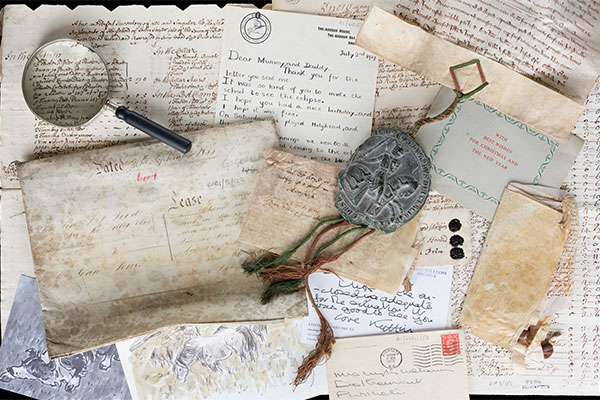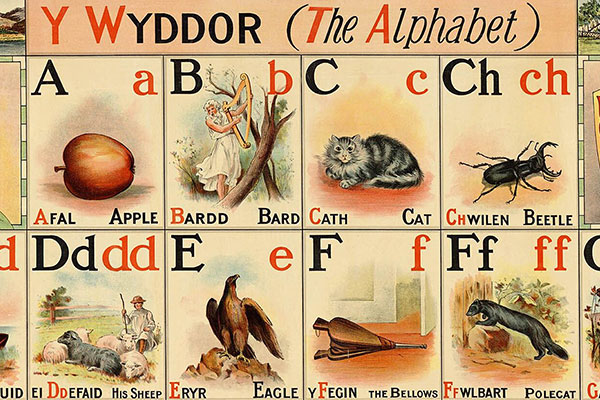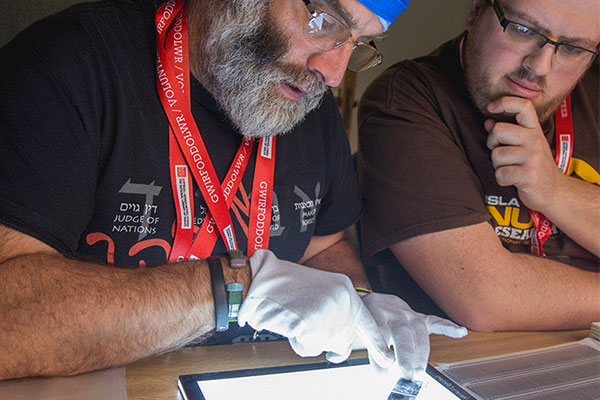The contents
In addition to the 'Hours of the Virgin,' the Llanbeblig Hours contains a number of remarkable features, such as a very rare 'Lily Crucifixion' illumination and a number of entries of Welsh interest in the Calendar. Seven miniatures are listed below, which may be viewed separately from the main body of the manuscript.
- f. 1v The Annunciation : Gabriel kneeling on one knee
- f. 2r The Annunciation : The Virgin Mary enthroned under a green canopy. On the left is a large silver vase containing a tall lily, with a figure of the crucified Christ on the stalk and leaves.
- f. 2v St. Peter, holding a key and a book
- f. 3r A king, possibly Magnus Maximus, holding a sceptre
- f. 3v A bishop, possibly St. Peblig, blessing and wearing a mitre, and holding a crosier
- f. 4r Madonna and Child
- f. 4v God, The Holy Spirit, and Christ Crucified




